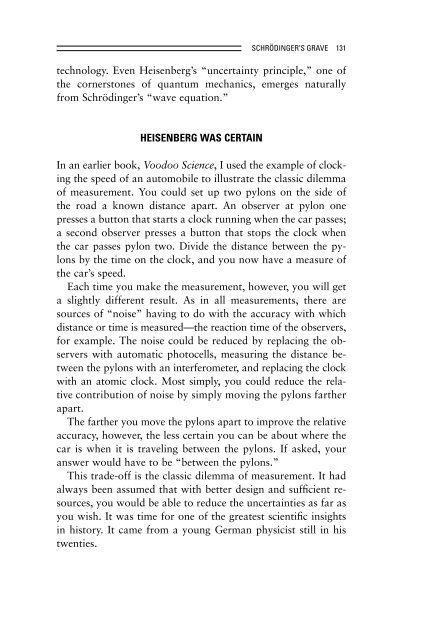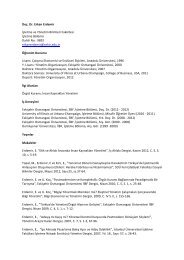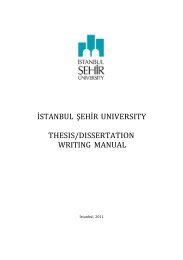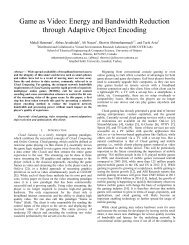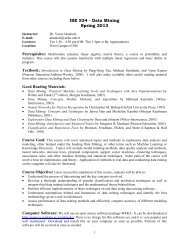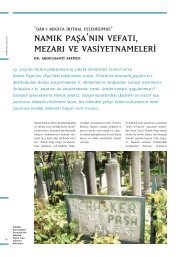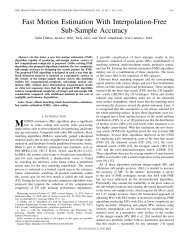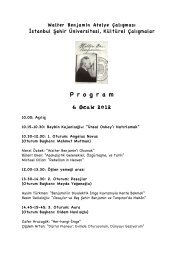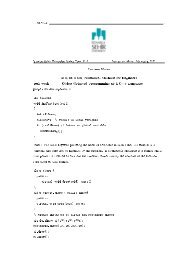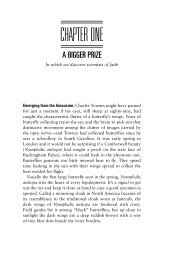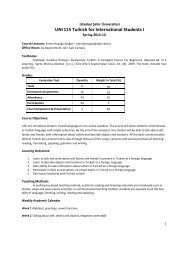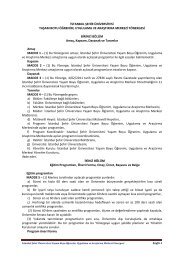Superstition: Belief in the Age of Science - My Sehir
Superstition: Belief in the Age of Science - My Sehir
Superstition: Belief in the Age of Science - My Sehir
- No tags were found...
Create successful ePaper yourself
Turn your PDF publications into a flip-book with our unique Google optimized e-Paper software.
SCHRÖDINGER’S GRAVE 131technology. Even Heisenberg’s “uncerta<strong>in</strong>ty pr<strong>in</strong>ciple,” one <strong>of</strong><strong>the</strong> cornerstones <strong>of</strong> quantum mechanics, emerges naturallyfrom Schröd<strong>in</strong>ger’s “wave equation.”HEISENBERG WAS CERTAINIn an earlier book, Voodoo <strong>Science</strong>, I used <strong>the</strong> example <strong>of</strong> clock<strong>in</strong>g<strong>the</strong> speed <strong>of</strong> an automobile to illustrate <strong>the</strong> classic dilemma<strong>of</strong> measurement. You could set up two pylons on <strong>the</strong> side <strong>of</strong><strong>the</strong> road a known distance apart. An observer at pylon onepresses a button that starts a clock runn<strong>in</strong>g when <strong>the</strong> car passes;a second observer presses a button that stops <strong>the</strong> clock when<strong>the</strong> car passes pylon two. Divide <strong>the</strong> distance between <strong>the</strong> pylonsby <strong>the</strong> time on <strong>the</strong> clock, and you now have a measure <strong>of</strong><strong>the</strong> car’s speed.Each time you make <strong>the</strong> measurement, however, you will geta slightly different result. As <strong>in</strong> all measurements, <strong>the</strong>re aresources <strong>of</strong> “noise” hav<strong>in</strong>g to do with <strong>the</strong> accuracy with whichdistance or time is measured—<strong>the</strong> reaction time <strong>of</strong> <strong>the</strong> observers,for example. The noise could be reduced by replac<strong>in</strong>g <strong>the</strong> observerswith automatic photocells, measur<strong>in</strong>g <strong>the</strong> distance between<strong>the</strong> pylons with an <strong>in</strong>terferometer, and replac<strong>in</strong>g <strong>the</strong> clockwith an atomic clock. Most simply, you could reduce <strong>the</strong> relativecontribution <strong>of</strong> noise by simply mov<strong>in</strong>g <strong>the</strong> pylons far<strong>the</strong>rapart.The far<strong>the</strong>r you move <strong>the</strong> pylons apart to improve <strong>the</strong> relativeaccuracy, however, <strong>the</strong> less certa<strong>in</strong> you can be about where <strong>the</strong>car is when it is travel<strong>in</strong>g between <strong>the</strong> pylons. If asked, youranswer would have to be “between <strong>the</strong> pylons.”This trade-<strong>of</strong>f is <strong>the</strong> classic dilemma <strong>of</strong> measurement. It hadalways been assumed that with better design and sufficient resources,you would be able to reduce <strong>the</strong> uncerta<strong>in</strong>ties as far asyou wish. It was time for one <strong>of</strong> <strong>the</strong> greatest scientific <strong>in</strong>sights<strong>in</strong> history. It came from a young German physicist still <strong>in</strong> histwenties.


